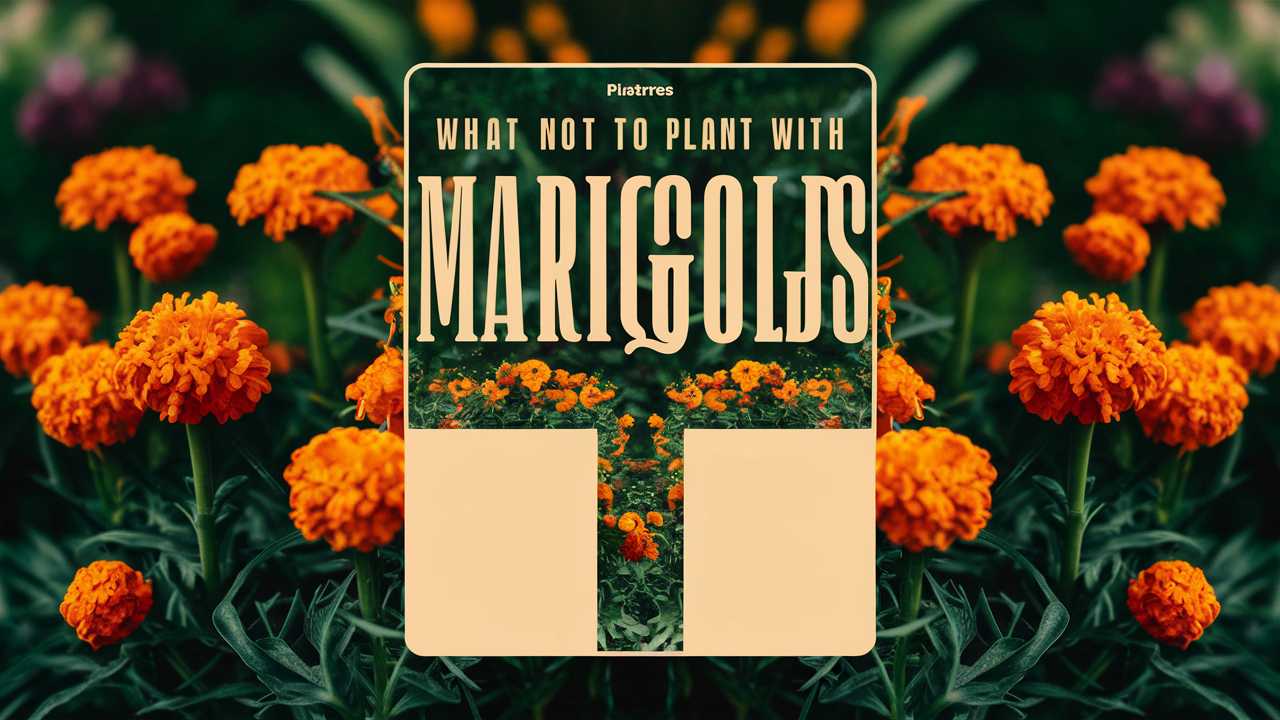In this guide, we’ll explore what not to plant with marigolds to ensure your gardening efforts are successful and harmonious.
Beans
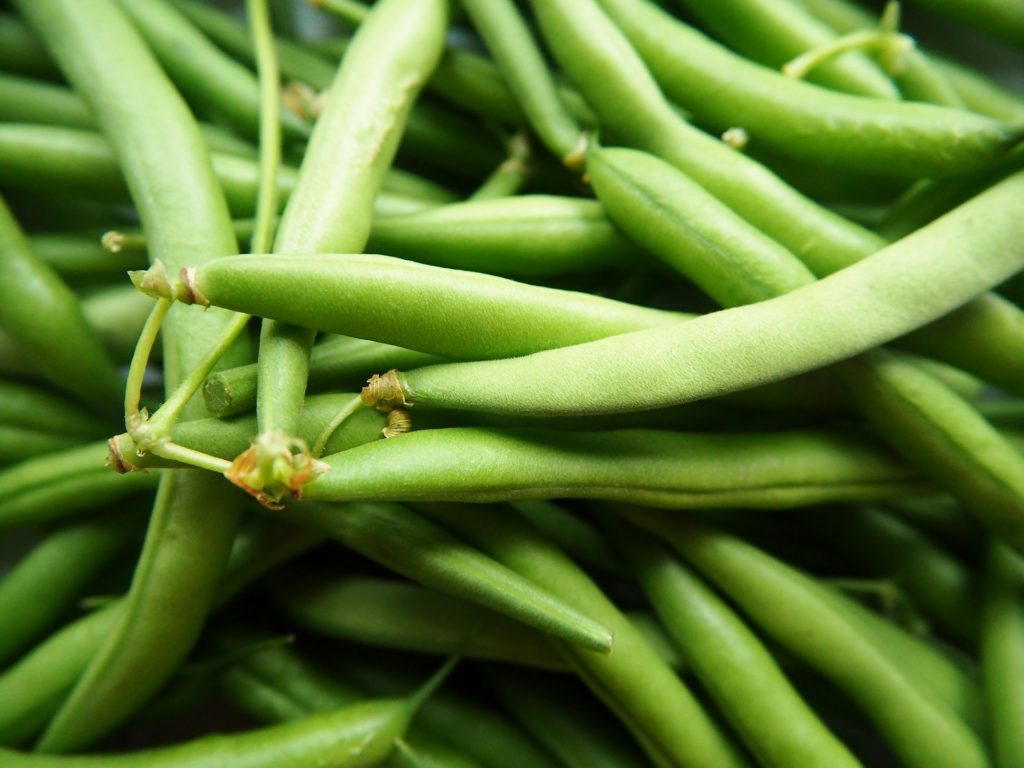
Beans, particularly bush beans, don’t pair well with marigolds. While marigolds do an excellent job repelling some pests, they can inhibit the growth of bean plants. This negative interaction stems from a chemical released by marigolds that affects the nitrogen-fixing abilities of beans. Nitrogen is crucial for the growth of bean plants, as they rely on a symbiotic relationship with soil bacteria that convert atmospheric nitrogen into a usable form. Marigolds may disrupt this relationship, leading to stunted growth and lower yields. To maintain a thriving vegetable patch, consider planting beans elsewhere, where they can enjoy optimum nitrogen levels without interference.
Cabbage Family Plants
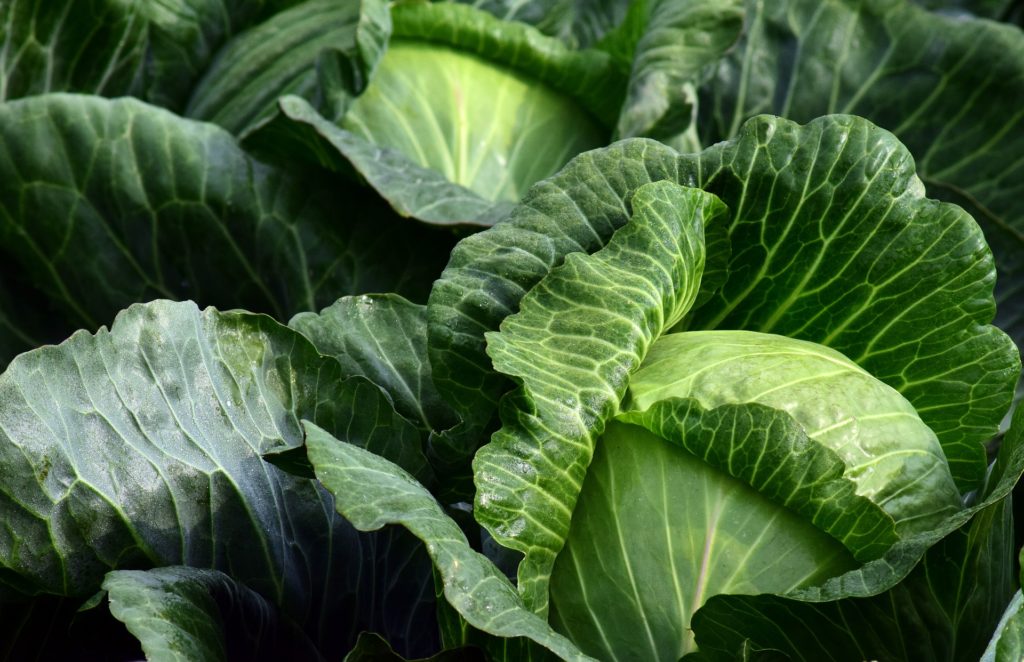
Members of the cabbage family, such as broccoli, cauliflower, and kale, often experience adversity when planted near marigolds. The volatile compounds released by marigolds can negatively influence the growth of these cruciferous vegetables, often resulting in slower growth rates and even distorted development. Additionally, while marigolds are reputed for their pest-repelling qualities, they may inadvertently attract certain pests that also prey on cabbage family members, such as aphids and whiteflies. If you’re aiming for a flourishing brassica garden, it’s best to steer clear of planting marigolds in close proximity to these vegetables.
Fennel
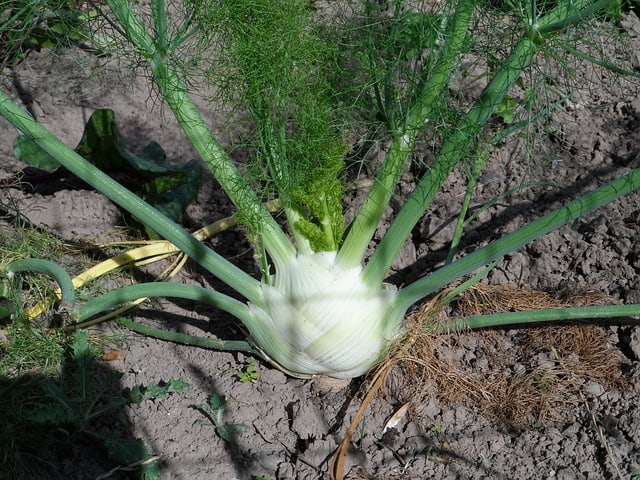
Fennel is another plant that should never be planted with marigolds. Unlike many herbs that serve as great companions, fennel possesses a unique ability to produce substances that inhibit the growth of nearby plants, including marigolds. This allelopathic quality means that when grown together, fennel may suppress the development of marigolds and vice versa. The result is diminished health and vigor for both plant species. If you love fennel in your garden, place it far from flowering marigolds to ensure both can thrive in their own space.
Peas
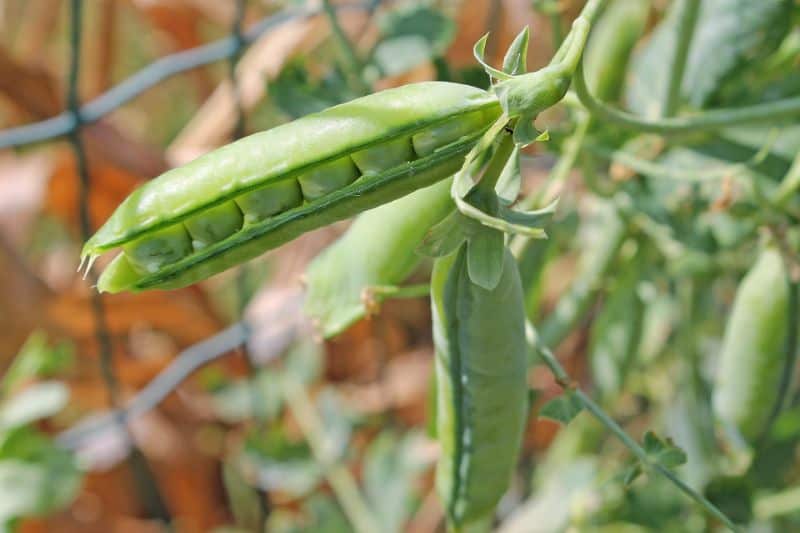
Peas are delightful and nutritious additions to the garden; however, they are not compatible with marigolds. Similar to beans, peas rely heavily on nitrogen in the soil, a resource that marigolds can unwittingly disrupt. Planting marigolds near peas may lead to stunted growth, as the flowers can impede the healthy nitrogen fixation process. Moreover, because marigolds attract some of the same pests that harm pea plants, like aphids, this pairing can ultimately backfire. For better results, keep your peas and marigolds planted in separate areas of the garden.
Climbing Roses
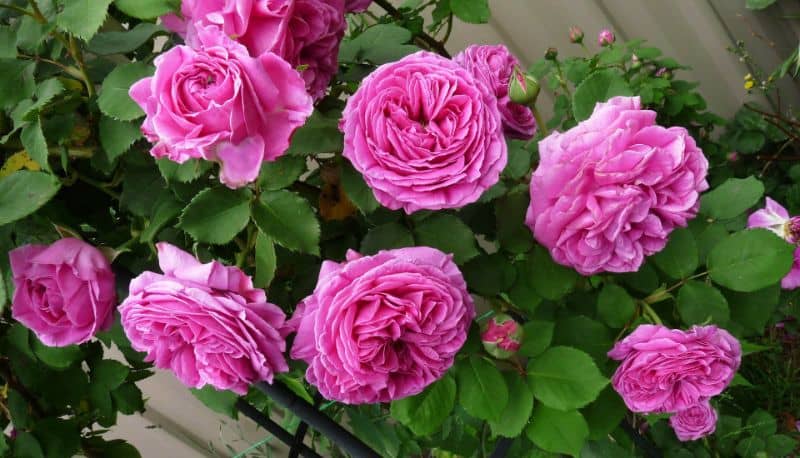
Although climbing roses can be beautiful when added to a garden, they don’t make good companions for marigolds. The root systems and growth habits of climbing roses can compete with marigolds for nutrients and water, causing both plants to suffer. Additionally, the rose’s susceptibility to certain pests and diseases may be exacerbated by their proximity to marigolds. While marigolds can help in warding off some rose pests, their competitive nature may lead to insufficient resources for both species. To maintain the best health for your climbing roses and marigolds, consider planting them in different locations altogether.
Potatoes

Potatoes and marigolds may seem like a benign partnership, but they do not complement each other well in the garden. Marigolds can attract beneficial insects, which might help control certain pests, but they also tend to draw aphids—harmful critters that can devastate potato plants. Furthermore, planting marigolds near potatoes has been shown to inhibit their growth. The roots of the marigolds can interfere with the nutrient absorption of potato plants, resulting in lower yields and poor tuber development. If you’re cultivating a potato patch, it’s advisable to give marigolds a wide berth.
Melons
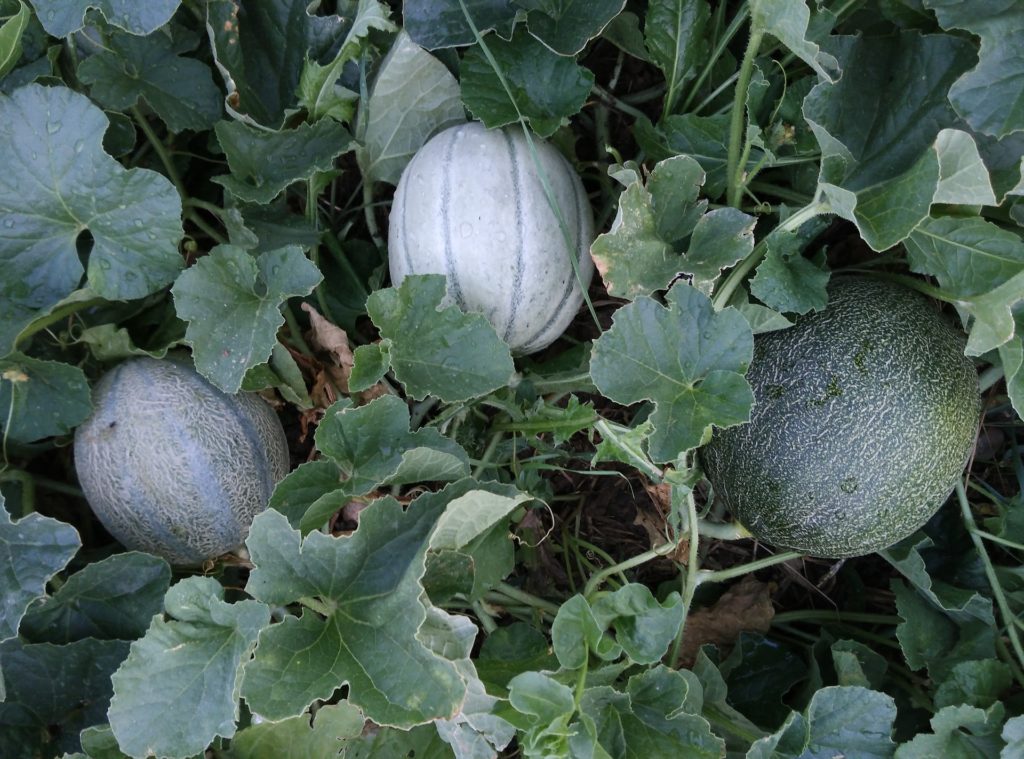
Planting melons, such as cantaloupe and watermelon, alongside marigolds is not recommended. Melons and marigolds can clash in terms of nutrient requirements and growth habits. While marigolds may provide some pest control, the competition for resources, particularly water and sunlight, can stunt the growth of melon plants. Melons thrive in sunny, spacious conditions where they can spread out freely, while marigolds, depending on the variety, may create unnecessary competition. For the best results, give your melons plenty of room to flourish away from marigolds.
Cucumbers
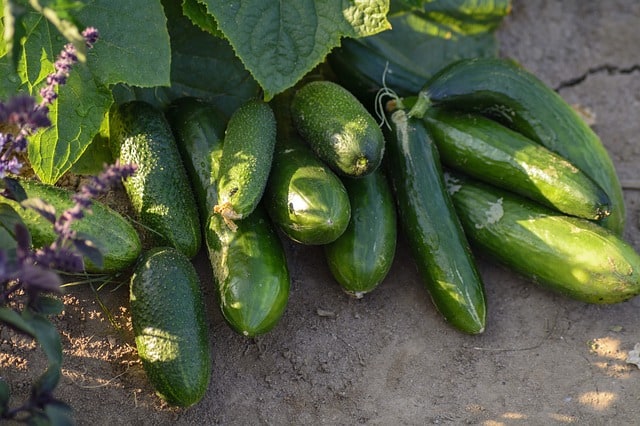
Like their melon counterparts, cucumbers are best planted far from marigolds. The fleshy vining nature of cucumbers can lead to competition for both space and nutrients. Additionally, marigolds can attract cucumber beetles, which are notorious for wreaking havoc on cucumber plants. This relationship can prove detrimental, as the stress from pests can inhibit cucumber growth and reduce fruit quality. To enjoy bountiful cucumbers, plant marigolds safely away to prevent any competition and pest attraction.
Sunflowers
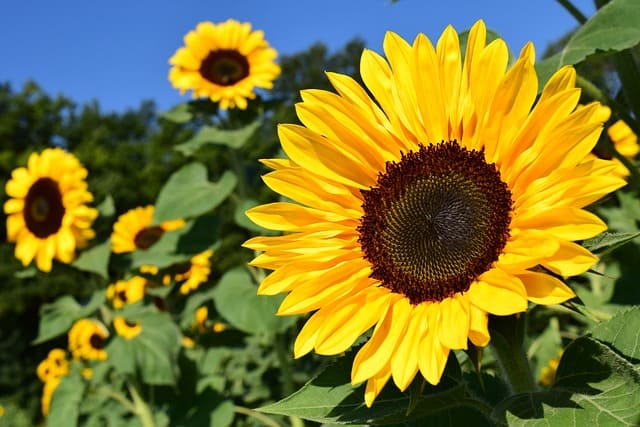
Sunflowers bring beauty and brightness to the garden, yet they are not ideal companions for marigolds. While they can attract beneficial pollinators, sunflowers also have a tall and sprawling growth habit, which can overshadow marigolds, stunting their growth by preventing access to sunlight. Plus, sunflowers can prove to be inviting hosts for aphids and other pests, which may then spread to nearby marigolds. For a healthy garden dynamic, it’s best to separate these two flowering powerhouses.
Sage and Rosemary

Complementary herbs like sage and rosemary may not yield favorable results when grown in proximity to marigolds. Although both marigolds and herbs can deter pests, the growth patterns and nutrient requirements can clash. Both sage and rosemary thrive in drier conditions, while marigolds prefer a more evenly moist environment. This difference can lead to stress for both types of plants when competing for water and nutrients. To maximize the benefits of each, plant sage and rosemary away from your marigolds, allowing both to flourish.
Geraniums
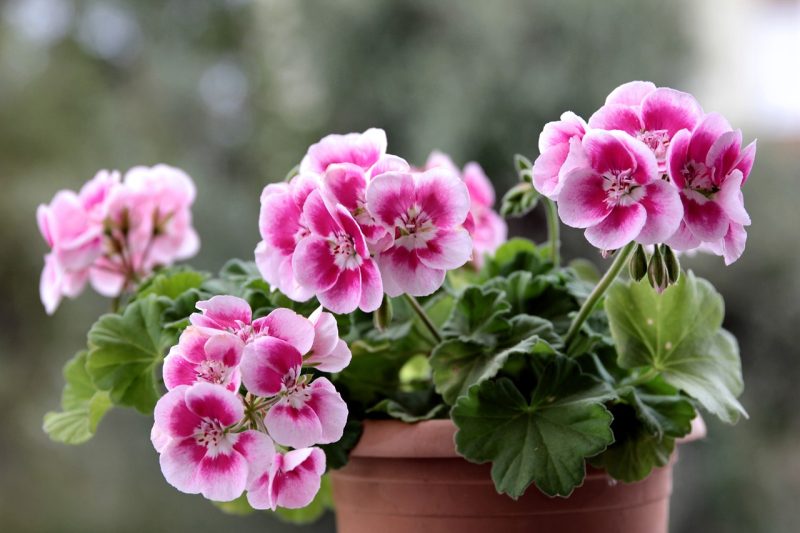
When planting geraniums, keep them away from marigolds to prevent detrimental competition. These two flowering plants can create a problem in the garden due to their varying growth habits and requirements. Geraniums can shade marigolds and deprive them of sunlight, ultimately affecting their blooming potential and overall health. Additionally, deteriorating soil conditions can arise from their respective nutrient needs, leading to competition that rewards neither plant. To ensure both thrive, maintain a distance between geraniums and marigolds.
Zinnias
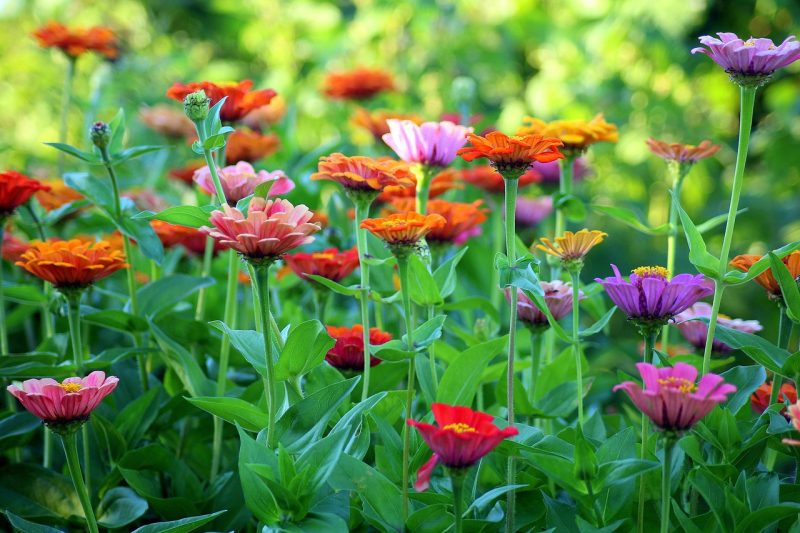
Though zinnias and marigolds may seem like an appealing pair, they’re not the best companions in the garden. Both flowers have similar nutrient needs and can compete for water and nutrients, often resulting in reduced vigor for both. Zinnias can attract pests that may also damage marigolds. Furthermore, the crowded conditions created by planting these two side by side can heighten the risk of diseases developing, particularly fungal infections. To maintain a vibrant display and healthy plants, give zinnias and marigolds their distinct spaces in the garden.
Conclusion
While marigolds are a fantastic addition to many gardens due to their pest-repelling qualities and vibrant blooms, it’s crucial to be mindful of their companions. Understanding the interactions between marigolds and these various plants can help create a thriving garden ecosystem.


